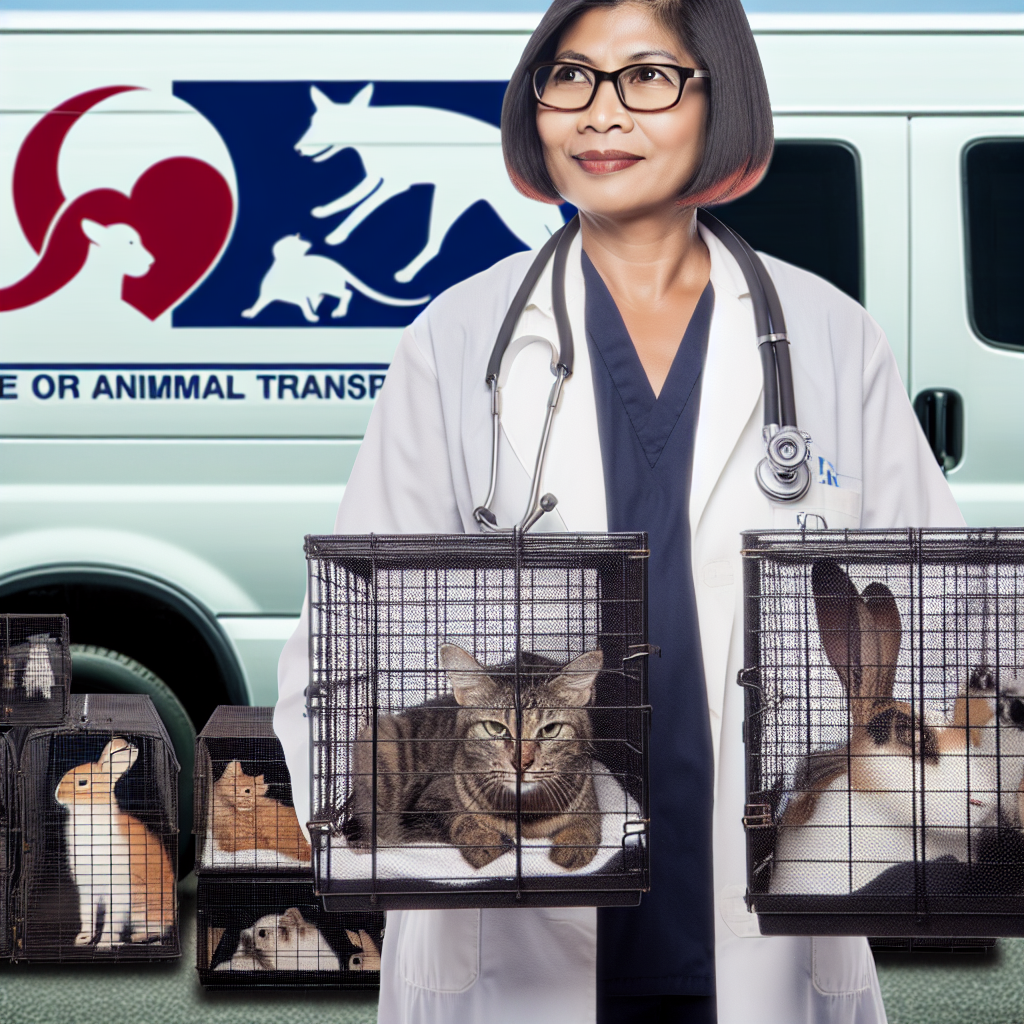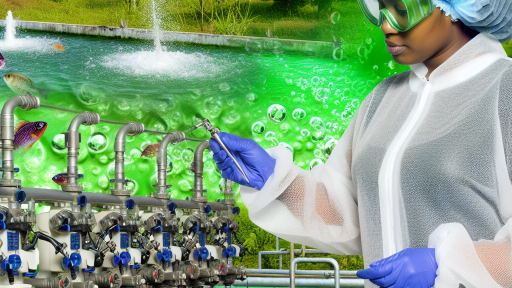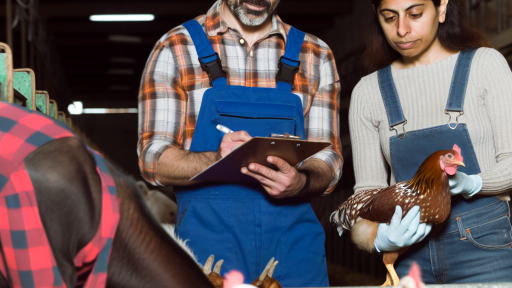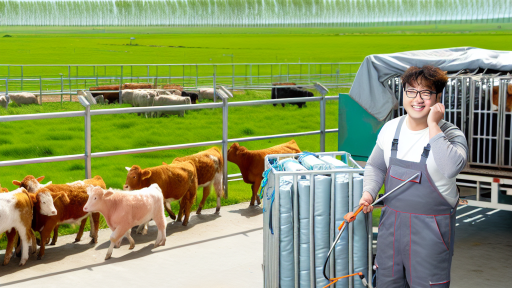Introduction to Animal Welfare During Transportation
Animal welfare during transportation is a critical issue.
Transporting animals can cause stress and suffering if not managed properly.
It is essential to prioritize the well-being of animals during these movements.
Various welfare standards exist to guide humane practices.
These standards emphasize minimizing pain and distress for animals.
Proper transportation benefits not only the animals but also the industry.
Striving for high welfare standards enhances public trust and improves market outcomes.
Understanding Animal Needs
Animals have specific physical and psychological needs during travel.
Providing adequate space is essential for their comfort.
Access to food and water must be ensured at all times.
Additionally, appropriate temperature controls help prevent heat stress.
Regular breaks during long journeys allow animals to rest and recuperate.
Legal and Ethical Considerations
Various regulations govern the transportation of animals worldwide.
Compliance with these laws is crucial to ensure animal welfare.
Furthermore, many organizations advocate for stringent welfare policies.
Transform Your Agribusiness
Unlock your farm's potential with expert advice tailored to your needs. Get actionable steps that drive real results.
Get StartedEthical responsibilities extend beyond legal obligations.
Companies should adopt best practices for humane transport voluntarily.
Best Practices for Transportation
Implementing best practices can significantly improve animal welfare.
Start by training staff on animal handling techniques.
Develop clear protocols for loading and unloading animals.
Ensure that vehicles are designed for safe and comfortable travel.
Monitoring animals during transit allows for prompt intervention if needed.
The Role of Stakeholders
Every participant in the supply chain affects animal welfare during transportation.
Farmers must prioritize the health of animals before transport.
Transporters play a vital role in maintaining welfare standards.
Retailers and consumers also influence practices through their choices.
Collaboration among all stakeholders is essential for better outcomes.
Regulatory Standards and Guidelines for Animal Transport
Importance of Regulatory Standards
Regulatory standards establish essential guidelines for animal welfare during transport.
These standards aim to protect animals from unnecessary pain and distress.
Additionally, they promote compliance within the agriculture and transport industries.
Key Regulations and Policies
Multiple organizations create regulations for animal transport.
The Animal Welfare Act is one of the primary frameworks in the United States.
This act sets standards for humane handling, care, treatment, and transport of animals.
Moreover, the USDA oversees compliance with these regulations.
International Standards
International organizations also provide guidelines for animal transport.
The World Organisation for Animal Health (OIE) promotes best practices globally.
These practices include maintaining proper conditions during transit.
Transporters must ensure that animals have sufficient space, food, and water.
Transport Conditions
Transport conditions are vital to ensure the welfare of the animals.
Showcase Your Farming Business
Publish your professional farming services profile on our blog for a one-time fee of $200 and reach a dedicated audience of farmers and agribusiness owners.
Publish Your ProfileTemperatures must remain within a comfortable range throughout transport.
Moreover, minimizing transport time reduces stress on the animals.
Handlers are responsible for checking animals regularly during transport.
Training and Education
Proper training for personnel in animal transport is crucial.
Well-trained staff can recognize signs of distress or illness in animals.
Furthermore, education regarding regulations enhances compliance and welfare.
Companies should invest in training programs for their workforce.
Monitoring and Compliance
Monitoring animal welfare during transport ensures adherence to standards.
Regular audits and reports help to identify areas for improvement.
Transparency increases accountability among transport companies.
Consequently, this encourages a culture of welfare-centric practices.
Key Factors Influencing Animal Welfare During Transportation
Environment and Space
The environment plays a vital role in animal welfare during transportation.
Animals require adequate space to move and rest comfortably.
Overcrowding can lead to significant stress and discomfort.
Maintaining proper ventilation helps prevent overheating.
Additionally, the temperature should remain within a comfortable range.
Duration of Transportation
Long transportation times can negatively impact animal welfare.
It increases the likelihood of stress and fatigue.
Transporting animals over shorter distances is generally preferable.
Also, planning regular breaks can enhance their overall well-being.
Providing food and water at appropriate intervals is crucial.
Handling Practices
Gentle handling practices are essential during loading and unloading.
Stressful handling can lead to injury and subsequent welfare issues.
Training staff on humane treatment improves animal safety.
Using calm voices and slow movements fosters a relaxed atmosphere.
Additionally, employing effective loading techniques minimizes distress.
Transportation Vehicles
The choice of vehicle impacts animal comfort during transport.
Vehicles should be specifically designed for transporting animals.
Features like proper flooring can reduce slipping and falling risks.
Regular maintenance of transport vehicles is necessary for safety.
Moreover, vehicles should be appropriately sized for the species being transported.
Monitoring and Assessment
Continuous monitoring of animals during transportation is essential.
Staff can identify signs of stress and discomfort early.
Utilizing technology can help in real-time assessment.
Regular assessments ensure adherence to welfare standards.
Documentation of transport conditions further aids in welfare evaluation.
Find Out More: Insulation Techniques For Livestock Facilities
Best Practices for Transporting Different Types of Animals
Transporting Livestock
Transporting livestock requires careful planning and execution.
First, ensure animals have sufficient space in the transport vehicle.
Avoid overcrowding as it can lead to stress and injuries.
Showcase Your Farming Business
Publish your professional farming services profile on our blog for a one-time fee of $200 and reach a dedicated audience of farmers and agribusiness owners.
Publish Your ProfileAdditionally, provide adequate ventilation to keep animals comfortable.
Furthermore, monitor temperature and humidity during transport.
It’s essential to provide water during long journeys.
Take regular breaks for feeding and resting to maintain their health.
Ultimately, prioritize animal welfare throughout the entire journey.
Transporting Companion Animals
When transporting companion animals, ensure they are securely contained.
Use appropriate carriers to prevent escape and injuries.
Moreover, familiarize animals with the carrier before the journey.
This practice will help reduce anxiety and stress.
Provide familiar items such as blankets or toys to comfort them.
Regular breaks are important for bathroom breaks and exercise.
Never leave animals unattended in vehicles, especially in extreme temperatures.
Additionally, ensure proper identification is on each animal.
Transporting Exotic Animals
Exotic animals require specialized care during transport.
Research the specific needs of each species you are transporting.
Use climate-controlled environments to replicate their natural habitats.
Provide space that allows for natural behaviors where possible.
Veterinary checks should be mandatory prior to transport.
Always adhere to local and international regulations for exotic species.
Moreover, ensure transportation facilities are familiar with handling these animals.
Remember, the welfare of exotic animals is paramount throughout transportation.
Transporting Farm Animals for Processing
Farm animals destined for processing require respectful handling.
Minimize travel time to reduce stress on the animals.
Monitor animals closely during loading and unloading procedures.
Ensure compliance with animal welfare standards in transport vehicles.
Training for handlers is crucial in maintaining animal welfare.
They should understand low-stress handling techniques.
Caring for the animals’ mental and physical state is essential.
Ultimately, ensure a humane process from start to finish.
Uncover the Details: Integrating Exotic Livestock into Your Farm System
The Role of Training and Education in Ensuring Animal Welfare
Importance of Training for Handlers
Training ensures handlers understand animal behavior and needs.
This knowledge enhances their ability to create a stress-free environment.
Furthermore, trained handlers are better equipped to respond to emergencies.
Curriculum Development for Animal Welfare
Animal welfare training programs should include comprehensive curricula.
These programs must cover the basics of animal husbandry and care.
In addition, they should focus on the legal obligations regarding transportation.
Interactive components, such as workshops, reinforce theoretical knowledge.
Ongoing Education and Refresher Courses
Regular refresher courses keep handlers updated on best practices.
These sessions can address new regulations and emerging animal welfare science.
Encouraging ongoing education promotes a culture of continuous improvement.
Showcase Your Farming Business
Publish your professional farming services profile on our blog for a one-time fee of $200 and reach a dedicated audience of farmers and agribusiness owners.
Publish Your ProfilePartnering with Organizations for Training
Collaboration with animal welfare organizations enhances training effectiveness.
These partnerships can provide access to resources and expertise.
Working with these groups fosters a shared commitment to animal welfare.
Measuring Training Effectiveness
It is essential to evaluate the effectiveness of training programs.
Regular assessments can identify areas needing improvement.
Collecting feedback from handlers helps refine training approaches.
By measuring outcomes, organizations can enhance animal welfare standards.
Creating Awareness Among Stakeholders
Raising awareness about training and education benefits all stakeholders.
Informed stakeholders can advocate for improved animal welfare practices.
Campaigns highlighting the importance of effective training can drive positive change.
All parties involved in animal transportation must understand their roles.
You Might Also Like: Essential Breeding Strategies for Livestock Farmers

Monitoring and Assessing Animal Welfare During Transport
Importance of Monitoring
Monitoring animal welfare during transport is crucial for their wellbeing.
It helps identify stressors that may affect animals negatively.
Additionally, regular assessments ensure compliance with welfare standards.
Assessment Criteria
Several criteria are used to assess animal welfare during transport.
- The physical condition of the animals should be evaluated.
- Behavioral signs of stress must be observed.
- Environmental factors should be monitored continuously.
Use of Technology
Technology plays a significant role in monitoring animal welfare.
For example, GPS tracking can provide real-time location updates.
Cameras can help observe animals during transport.
Moreover, temperature sensors ensure optimal conditions inside transport vehicles.
Training Personnel
Employees must receive proper training on animal welfare protocols.
This training should cover handling methods and stress recognition.
Additionally, staff should learn to respond effectively to welfare issues.
Data Collection and Analysis
Collecting data allows for better understanding and improvement of practices.
Regular analysis helps identify trends in animal welfare over time.
Furthermore, data can guide future transportation improvements.
Discover More: Feeding Strategies for Exotic Livestock
Impact of Transportation Conditions on Animal Stress Levels
Understanding Stress Factors
Transportation creates various stress factors for animals.
These stressors can include confinement, temperature fluctuations, and noise.
In addition, lack of access to food and water can exacerbate stress levels.
Animals exhibit stress responses such as behavioral changes and health issues.
The Role of Transportation Duration
Longer transportation times significantly increase stress in animals.
Prolonged confinement can lead to panic and distress.
Consequently, shorter journeys should be prioritized where possible.
Moreover, regular stops during transportation can help alleviate stress.
Environmental Conditions During Transportation
Environmental conditions play a crucial role in animal well-being.
Extreme temperatures, whether hot or cold, impact stress levels negatively.
Proper ventilation and climate control help minimize these effects.
Consistent humidity levels are also essential for maintaining comfort.
Handling Practices During Transportation
Gentle handling reduces stress for animals being transported.
Showcase Your Farming Business
Publish your professional farming services profile on our blog for a one-time fee of $200 and reach a dedicated audience of farmers and agribusiness owners.
Publish Your ProfileIt is vital for handlers to remain calm throughout the process.
Moreover, training staff in appropriate techniques is essential.
Positive reinforcement can encourage better behavior from animals.
The Importance of Familiarity
Familiarity with transportation can lower stress levels.
Using familiar transport containers helps animals feel secure.
Additionally, maintaining a similar travel experience aids in comfort.
Animals often cope better when they recognize their surroundings.
Innovative Solutions and Technologies for Improving Animal Welfare in Transport
Enhanced Monitoring Systems
Utilizing advanced monitoring systems improves animal welfare significantly during transport.
Sensors can track the temperature and humidity levels within transport vehicles.
Additionally, GPS technology provides real-time location tracking, enhancing logistics.
This data ensures optimal conditions throughout the journey.
Design Improvements in Transport Containers
Innovations in transport container design promote better animal comfort.
Flexible container layouts allow for increased space and environmental enrichment.
Ventilation systems are now more efficient, ensuring appropriate airflow.
Furthermore, these containers are designed to reduce stress during loading and unloading.
Training Programs for Transport Personnel
Implementing comprehensive training programs ensures staff understand animal welfare needs.
Workers learn best practices for handling and caring for animals during transport.
Moreover, regular workshops keep personnel updated on new welfare standards and technologies.
This knowledge leads to improved animal care in all aspects of transportation.
Collaboration with Animal Welfare Organizations
Collaboration with animal welfare organizations enhances transport protocols.
Partnerships with experts provide insights into animal behavior and care.
Joint initiatives can lead to policy improvements at local and national levels.
These collaborations ultimately contribute to better welfare outcomes for transported animals.
Use of Mobile Applications and Technology
Integrating mobile applications allows for more efficient communication among transport teams.
These apps can provide checklists and reminders for animal welfare procedures.
They also facilitate instantaneous reporting of any welfare issues that arise.
This immediate response capability can mitigate distress for the animals involved.
Research and Development of Welfare Standards
Ongoing research drives the development of better welfare standards in animal transport.
Scientific studies help identify stress factors experienced by animals during transport.
Moreover, these findings promote the adoption of new technologies and methodologies.
Establishing comprehensive standards ensures consistent welfare practices across the industry.
Additional Resources
Animal welfare in the U.S. slaughter industry—a focus on fed cattle …




